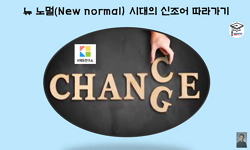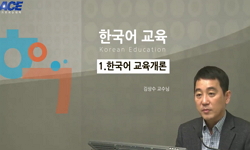이 글은 새 일상 시대의 국어 교육의 방향으로서의 새 기준을 논의했다. 먼저 ‘새 일상’과 ‘뉴 노멀’의 용어상의 관계를 살펴본 후, 새 일상 시대는 어떠한 모습을 띠고 있는지를, 사회...
http://chineseinput.net/에서 pinyin(병음)방식으로 중국어를 변환할 수 있습니다.
변환된 중국어를 복사하여 사용하시면 됩니다.
- 中文 을 입력하시려면 zhongwen을 입력하시고 space를누르시면됩니다.
- 北京 을 입력하시려면 beijing을 입력하시고 space를 누르시면 됩니다.

새 일상(new normal) 시대, 국어 교육의 새 기준(new normal) = The New Normal as a New Daily Life Era, The New Normal as a Standard of Korean Language Education
한글로보기https://www.riss.kr/link?id=A107808354
- 저자
- 발행기관
- 학술지명
- 권호사항
-
발행연도
2021
-
작성언어
-
- 주제어
-
등재정보
KCI등재
-
자료형태
학술저널
-
수록면
29-42(14쪽)
-
KCI 피인용횟수
0
- 제공처
-
0
상세조회 -
0
다운로드
부가정보
국문 초록 (Abstract)
사회 변화적 측면의 새 일상으로는 먼저, 경제 침체에 따른 것으로 빈부 격차 심화, 교육 불평등 심화, 저출산 고령화로 인구절벽 심화, 1인 가족 및 1인 생활 일반화 등을, 4차 산업 혁명 시대와 관련된 것으로 뉴미디어의 발달, 비대면 온라인 소통 방식의 일반화, 각 분야의 인공지능의 개발로 인간의 역할에 대한 변화 등을, 코비드 19로 인한 새 일상으로 소득 양극화, 배달 문화의 활성화 및 플랫폼 노동자와 그 인권 문제 대두, 재택 근무의 일반화, 교육 양극화의 심화 등을 제시할 수 있다. 이 밖에도 기후 변화로 인한 저탄소 배출, 우리나라의 경우 외국인 근로자 가정 및 국제 결혼 가정, 전세계적 한류 신드롬의 출현 등을 사회적 새 일상에 포함시켰다.
다음으로 교과적·교육적 측면에서는 2015 개정 교육과정의 총론에서 제시하고 있는 여섯 가지의 핵심 역량과 국어과 교육과정에서 제시하고 있는 여섯 가지의 핵심 역량이 새 일상 시대에도 유효한 것으로 파악했다. 다만 여기에 새 일상 시대의 사회 변화의 모습을 2022 개정 교육과정이 반영해야 함을 논의했다. 나아가 학문 간, 교과 간 통섭과 융합에 대한 요구, 코비드 19의 경우에서처럼, 사회적 거리 두기 등으로 인한 면대면(off-line) 중심의 학교·지역·사회 교육에서, 비대면(on-line) 병행 또는 비대면 중심의 학교·지역·사회 교육의 일반화 및 보편화 요구 등도 반영하여야 함을 논의했다.
끝으로 새 일상 시대의 특성과 성격을 국어 교육과 연계하여 논의하고, 새 일상 시대의 국어 교육이 지향해야 할 새 기준으로 첫째, 창의적 사고력 신장 강화, 둘째, 맥락과 어법에 맞는 국어 사용 능력 신장 강화, 셋째, 미디어 문식성 신장 강화, 넷째, 기초 문식성 강화, 다섯째, 융합적 사고 역량 강화를 제시하였다.
이 글은 새 일상 시대의 국어 교육의 방향으로서의 새 기준을 논의했다. 먼저 ‘새 일상’과 ‘뉴 노멀’의 용어상의 관계를 살펴본 후, 새 일상 시대는 어떠한 모습을 띠고 있는지를, 사회적 측면과 교과적·교육적 측면으로 나누어 살펴보았다.
사회 변화적 측면의 새 일상으로는 먼저, 경제 침체에 따른 것으로 빈부 격차 심화, 교육 불평등 심화, 저출산 고령화로 인구절벽 심화, 1인 가족 및 1인 생활 일반화 등을, 4차 산업 혁명 시대와 관련된 것으로 뉴미디어의 발달, 비대면 온라인 소통 방식의 일반화, 각 분야의 인공지능의 개발로 인간의 역할에 대한 변화 등을, 코비드 19로 인한 새 일상으로 소득 양극화, 배달 문화의 활성화 및 플랫폼 노동자와 그 인권 문제 대두, 재택 근무의 일반화, 교육 양극화의 심화 등을 제시할 수 있다. 이 밖에도 기후 변화로 인한 저탄소 배출, 우리나라의 경우 외국인 근로자 가정 및 국제 결혼 가정, 전세계적 한류 신드롬의 출현 등을 사회적 새 일상에 포함시켰다.
다음으로 교과적·교육적 측면에서는 2015 개정 교육과정의 총론에서 제시하고 있는 여섯 가지의 핵심 역량과 국어과 교육과정에서 제시하고 있는 여섯 가지의 핵심 역량이 새 일상 시대에도 유효한 것으로 파악했다. 다만 여기에 새 일상 시대의 사회 변화의 모습을 2022 개정 교육과정이 반영해야 함을 논의했다. 나아가 학문 간, 교과 간 통섭과 융합에 대한 요구, 코비드 19의 경우에서처럼, 사회적 거리 두기 등으로 인한 면대면(off-line) 중심의 학교·지역·사회 교육에서, 비대면(on-line) 병행 또는 비대면 중심의 학교·지역·사회 교육의 일반화 및 보편화 요구 등도 반영하여야 함을 논의했다.
끝으로 새 일상 시대의 특성과 성격을 국어 교육과 연계하여 논의하고, 새 일상 시대의 국어 교육이 지향해야 할 새 기준으로 첫째, 창의적 사고력 신장 강화, 둘째, 맥락과 어법에 맞는 국어 사용 능력 신장 강화, 셋째, 미디어 문식성 신장 강화, 넷째, 기초 문식성 강화, 다섯째, 융합적 사고 역량 강화를 제시하였다.
다국어 초록 (Multilingual Abstract)
The NNL in terms of social change is as follows. As a result of the economic downturn, the gap between the rich and the poor has widened, educational inequality has increased, the population cliff has been deepened due to the low birth rate and aging population, and single-person families and single-person lifestyles have generalized. As related to the era of the 4th industrial revolution, there are developments in new media, the generalization of non-face-to-face online communication methods, and changes in the role of humans due to the development of artificial intelligence in each field. As a NNL due to Covid 19, there are income polarization, the revitalization of delivery culture, the rise of platform workers and their human rights issues, the generalization of telecommuting, and the deepening of education polarization. In addition, low carbon emissions caused by climate change, foreign worker families and international marriage families, and the emergence of the global Hallyu syndrome can also be included in the social NNL.
Next, the NNL in terms of curriculum and education change is as follow. It was identified that the six core competencies presented in the general summary of the 2015 revised curriculum and the six core competencies presented in the Korean language curriculum are effective in the NNL.It was just discussed that the 2022 revised curriculum should reflect the social changes in the NNL era. Furthermore, It was discussed that the curriculum should also reflect the demand for generalization of non-face-to-face school, regional, and social education due to social distancing(Covid 19) and the demand for consilience and convergence between disciplines and subjects.
Finally, four NNS for Korean language education that reflect the characteristics of the NNL are presented. First, strengthening creative thinking ability, second, strengthening the ability to use Korean according to context and usage, third, strengthening media literacy, fourth, strengthening basic literacy, and fifth, strengthening convergence thinking capability.
This article discusses the new normal as a standard(NNS) as the direction of Korean language education in the new normal as a new daily life(NNL). First, after examining the terminological relationship between ‘NNL’, ‘NNS’ and ‘new normal’...
This article discusses the new normal as a standard(NNS) as the direction of Korean language education in the new normal as a new daily life(NNL). First, after examining the terminological relationship between ‘NNL’, ‘NNS’ and ‘new normal’, We looked at the characteristics of NNL by dividing it into a social aspect and a curricular·educational aspect.
The NNL in terms of social change is as follows. As a result of the economic downturn, the gap between the rich and the poor has widened, educational inequality has increased, the population cliff has been deepened due to the low birth rate and aging population, and single-person families and single-person lifestyles have generalized. As related to the era of the 4th industrial revolution, there are developments in new media, the generalization of non-face-to-face online communication methods, and changes in the role of humans due to the development of artificial intelligence in each field. As a NNL due to Covid 19, there are income polarization, the revitalization of delivery culture, the rise of platform workers and their human rights issues, the generalization of telecommuting, and the deepening of education polarization. In addition, low carbon emissions caused by climate change, foreign worker families and international marriage families, and the emergence of the global Hallyu syndrome can also be included in the social NNL.
Next, the NNL in terms of curriculum and education change is as follow. It was identified that the six core competencies presented in the general summary of the 2015 revised curriculum and the six core competencies presented in the Korean language curriculum are effective in the NNL.It was just discussed that the 2022 revised curriculum should reflect the social changes in the NNL era. Furthermore, It was discussed that the curriculum should also reflect the demand for generalization of non-face-to-face school, regional, and social education due to social distancing(Covid 19) and the demand for consilience and convergence between disciplines and subjects.
Finally, four NNS for Korean language education that reflect the characteristics of the NNL are presented. First, strengthening creative thinking ability, second, strengthening the ability to use Korean according to context and usage, third, strengthening media literacy, fourth, strengthening basic literacy, and fifth, strengthening convergence thinking capability.
참고문헌 (Reference)
1 교육부, "초·중등학교 교육과정 총론"
2 노명완, "창조적 지식 기반 사회와 국어과 교육" 도서출판 박이정 2003
3 이병규, "지능 정보화 시대와 국어 교육" 한국국어교육학회 (113) : 7-36, 2017
4 김광해, "국어지식 교육론" 서울대학교 출판부 2001
5 교육부, "국어과 교육과정"
6 이병규, "국어과 교육 대상으로서의 매체의 특성 연구" 한국초등국어교육학회 (53) : 109-136, 2013
7 이병규, "국어 지식 교육의 성격과 국어과 교육의 영역 체계" 국어교육학회 (22) : 243-274, 2005
8 이병규, "국어 문법 교육론" 집문당 2019
9 이병규, "교과 간 융합 탐구 학습 모형 탐색: 도덕・국어・과학과를 중심으로" 한국초등도덕교육학회 (70) : 1-31, 2020
10 이병규, "“동의? 어, 인정”을 어떻게 볼 것인가" 한국어문기자협회 154 : 2018
1 교육부, "초·중등학교 교육과정 총론"
2 노명완, "창조적 지식 기반 사회와 국어과 교육" 도서출판 박이정 2003
3 이병규, "지능 정보화 시대와 국어 교육" 한국국어교육학회 (113) : 7-36, 2017
4 김광해, "국어지식 교육론" 서울대학교 출판부 2001
5 교육부, "국어과 교육과정"
6 이병규, "국어과 교육 대상으로서의 매체의 특성 연구" 한국초등국어교육학회 (53) : 109-136, 2013
7 이병규, "국어 지식 교육의 성격과 국어과 교육의 영역 체계" 국어교육학회 (22) : 243-274, 2005
8 이병규, "국어 문법 교육론" 집문당 2019
9 이병규, "교과 간 융합 탐구 학습 모형 탐색: 도덕・국어・과학과를 중심으로" 한국초등도덕교육학회 (70) : 1-31, 2020
10 이병규, "“동의? 어, 인정”을 어떻게 볼 것인가" 한국어문기자협회 154 : 2018
11 이병규, "‘매체’와 ‘매체언어’의 개념에 대한 비판적 검토와 대안 탐색" 한민족문화학회 49 (49): 95-119, 2015
동일학술지(권/호) 다른 논문
-
- 서울교육대학교 초등교육연구원
- 권정민 ( Kwon Jungmin )
- 2021
- KCI등재
-
음성대화처리기술 기반 In-Class 앱을 활용한 초등영어학습자의 반응 연구
- 서울교육대학교 초등교육연구원
- 윤택남 ( Yoon Tecnam )
- 2021
- KCI등재
-
인공지능 챗봇을 활용한 초등영어 말하기 지도의 전망: Dialogflow를 중심으로
- 서울교육대학교 초등교육연구원
- 윤여범 ( Yoon Yeo Bom )
- 2021
- KCI등재
-
절차적 프로그래밍 교육을 위한 텐저블 프로그래밍 도구 개발
- 서울교육대학교 초등교육연구원
- 전석주 ( Chun Seok-Ju )
- 2021
- KCI등재
분석정보
인용정보 인용지수 설명보기
학술지 이력
| 연월일 | 이력구분 | 이력상세 | 등재구분 |
|---|---|---|---|
| 2022-03-08 | 학회명변경 | 영문명 : Elementary Education Research Center -> Elementary Education Research Institute |  |
| 2022 | 평가예정 | 재인증평가 신청대상 (재인증) | |
| 2019-01-01 | 평가 | 등재학술지 유지 (계속평가) |  |
| 2016-01-01 | 평가 | 등재학술지 선정 (계속평가) |  |
| 2015-01-01 | 평가 | 등재후보학술지 유지 (계속평가) |  |
| 2013-01-01 | 평가 | 등재후보학술지 유지 (기타) |  |
| 2012-01-01 | 평가 | 등재후보학술지 유지 (기타) |  |
| 2011-12-08 | 학술지명변경 | 외국어명 : 미등록 -> Korean Journal of Elementary Education |  |
| 2011-01-01 | 평가 | 등재후보 1차 PASS () |  |
| 2009-01-01 | 평가 | 등재후보학술지 선정 () |  |
| 2007-05-03 | 학회명변경 | 한글명 : 초등교육연구소 -> 초등교육연구원 |
학술지 인용정보
| 기준연도 | WOS-KCI 통합IF(2년) | KCIF(2년) | KCIF(3년) |
|---|---|---|---|
| 2016 | 0.96 | 0.96 | 1.03 |
| KCIF(4년) | KCIF(5년) | 중심성지수(3년) | 즉시성지수 |
| 0.92 | 0.89 | 1.375 | 0.14 |





 KCI
KCI KISS
KISS






